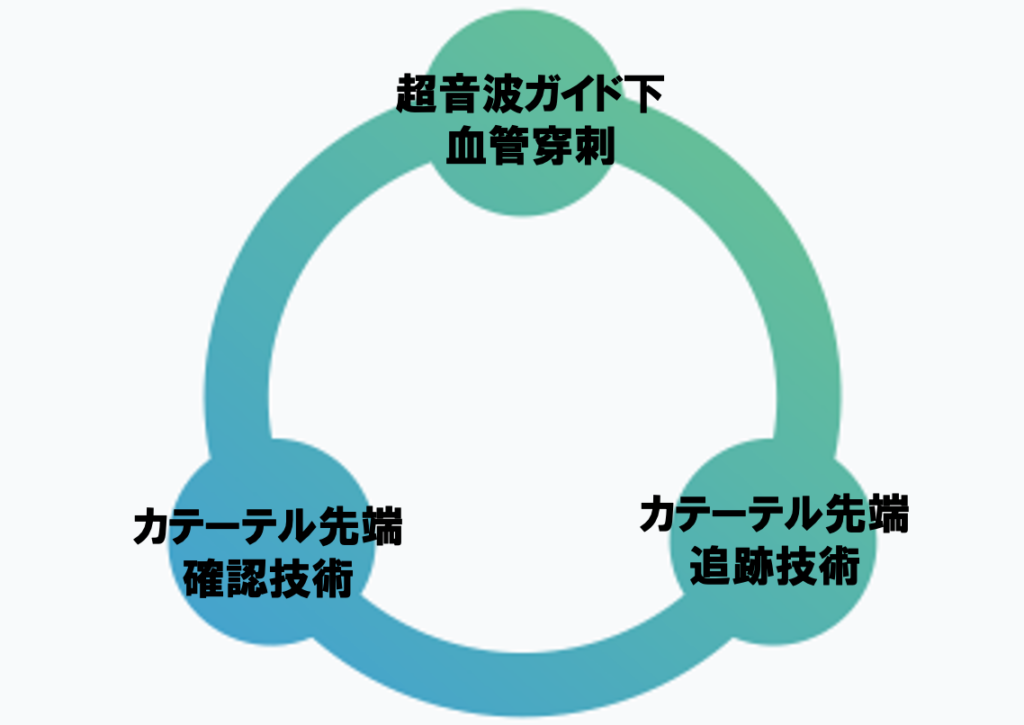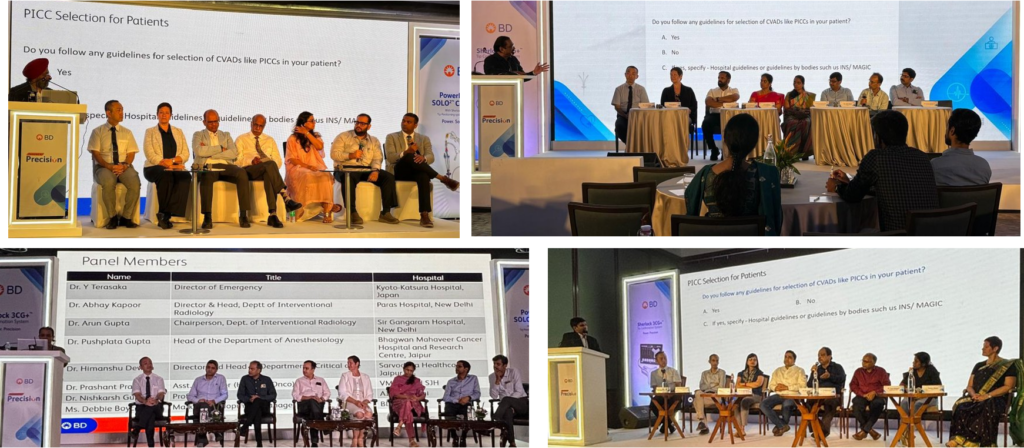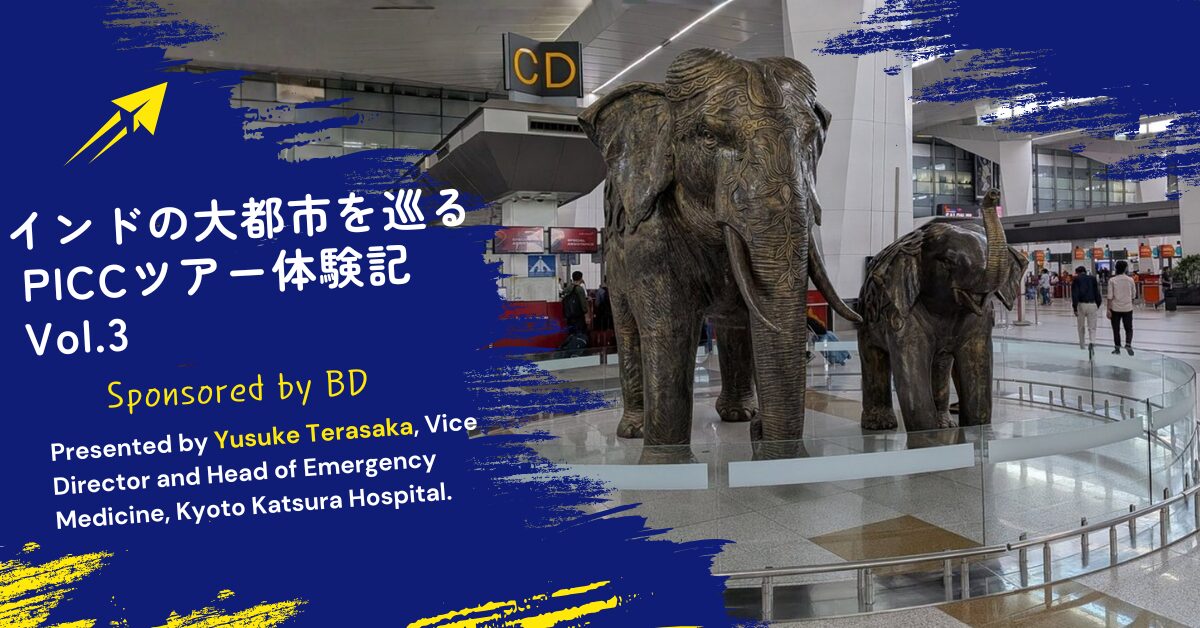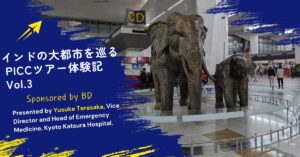Vice President and Chief of Emergency Department, Kyoto Katsura Hospital
Yusuke Terasaka
Values of PICC among physicians in various fields in India
Through Panel Discussion

Three key techniques for proper PICC insertion and positioning
Lectures were given on the techniques required for proper PICC insertion and positioning in Delhi, Mumbai, Chennai, and Kolkata, introducing guidelines and evidence from each country, and PICC-related Panel discussions on PICC-related topics were held.


The differences in religious and cultural dress, such as saris and turbans, were impressive. Despite the diversity of race, religion, and language, medical personnel are uniformly energetic. English is the standard language for medical textbooks, and everyone conducts professional conversations in English (with strong pronunciation habits). The PICC needs in pediatric oncology/hematology and organ transplant patients were also outstanding in that they are very high.
Issues related to nurses' use of echo

In India, a great many families want to have boys,Abortion of girls due to gender preference is a social problemand the easy use of ultrasound (echo) is prohibited. Against this backdrop, many facilities and physicians are cautious about the use of echo by nurses, and many hospitals do not allow nurses to perform echo guided punctures.
On the other hand, demand for PICC is high, and many facilities perform insertion by blind puncture without the use of echo. The nurse-led PICC insertion facility we visited is a high-volume center, which is also responsible for educating and training nurses from other hospitals.
There is an aspect of the technique that assumes blind puncture is widely used in the region. Since many of the patients are children and need to puncture small blood vessels, it was impressive to see that some of the more experienced surgeons can perform blind puncture with a high degree of accuracy.
In India, there is no official qualification system equivalent to the Japanese "medical nurse" or "specific action training". In principle, anyone can perform PICC insertion after completing training. The training itself has no official framework, and the emphasis is placed on the actual background of where, from whom, and what kind of training the trainee received.
Main opinions from the panel discussion
In clinical practice in India, more than in Japan, each procedureStrict cost controlThe reusability of disposable kits (even products not recommended by the manufacturer are routinely attempted to be reused in some way at the discretion of the field) is constantly examined in the
There is a large difference in perception regarding the use of ultrasound (echo) by nurses.Some physicians insisted that regardless of the purpose, "its use is illegal," and the discussion stalled at times.
In the position of a radiologist,Insertion needs exceed the utilization quota of the fluoroscopy room.Therefore, it is of great help to have a system that can be performed outside the fluoroscopy room.
In facilities where nurses are primarily responsible for PICC insertion, about 10% of strayThe workload is heavy for nurses to travel back and forth to the x-ray room. A system that allows nurses to check for stray prevention in real time on site is required.
Balancing Evidence, Culture, and Needs
Strong understanding and cooperation from physicians and nursing departments at each facility is essential for the widespread use of echo guided puncture by nurses, and there is a "evidence culture" dynamic, at least when it comes to echo.
Regardless of the position of the person inserting the device, there was a common need for technology that would allow the tip position to be confirmed outside of the fluoroscopy room and post-insertion x-rays.
PICC is already widely used and has contributed significantly in clinical practice. Therefore, given the cultural background in India, it is deemed realistic to separate the use of echo from the awareness of advanced positioning and tracking technology.
Indian PICC Market Outlook
In India, medical resources are limited relative to the population, and the needs of each facility are very diverse. While facilities where nurses are involved in PICC operations have made progress in developing systems before and after insertion, the utilization of nurse echoes is controversial, and both the medical community and companies are extremely cautious in their discussions because of the legal interpretation involved.
There needs to be a law about echoes, though,Combining echo, cathode location technology, and cathode location tracking technologysees this as a "blue ocean" that could solve a number of PICC insertion environment issues.
I learned the value of flexibility in deciding what to prioritize.The first time I went to the school was also a great benefit.

It was a valuable opportunity to exchange views with many doctors and nurses and experience different cultures. I was stimulated and energized by everyone's enthusiasm, and at the same time, my perspective and sense of values were further broadened.
Next and final installmentIndia extra editionOh my god!!!



Comments